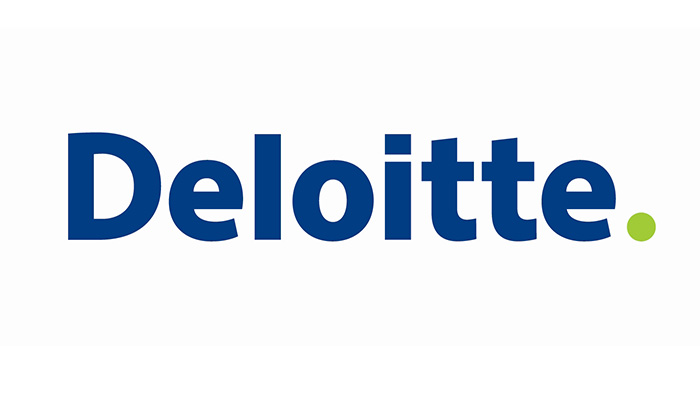
Broadcast and commercial revenue growth drove cumulative revenues of ‘big five’ European leagues to over $14 billion in 2014/15
The European football market totalled $26 billion in 2014/15, driven by the ‘big five’ European leagues (Bundesliga, La Liga, Ligue 1, Premier League and Serie A), which now account for 54% of the total.
Dan Jones, Partner in the Sports Business Group at Deloitte, commented: “Another year of growth for Europe’s leading leagues helps to re-emphasise that the best live football remains ‘premium content’ for broadcasters and that commercial partners will pay handsomely to be associated with Europe’s elite clubs given their global profile and mass appeal.”
Jones also believes further growth is inevitable, “With new broadcast deals due to start in several of the leagues in the next two seasons, we think that the European football market could exceed $30 billion in the 2016/17 season.”
A 3% revenue increase in 2014/15 saw the Premier League further extend its lead as the highest revenue generating league in the world, with total revenue of $5.3 billion. It also now leads the football world in all three key revenue categories, having overtaken the Bundesliga as the highest generator of commercial revenue in 2014/15.
A ninth consecutive year of revenue growth saw the Bundesliga maintain its position as the second highest revenue generating league in Europe, with total revenue of $2.9 billion. This growth was predominantly attributable to sponsorship and commercial partnerships, with revenue from this source representing 48% of total Bundesliga revenue.
La Liga clubs’ total revenue was $2.5 billion in 2014/15 following growth across all three revenue categories. The move to collective selling of broadcast rights is expected to see La Liga overtake the Bundesliga to become the second highest revenue generating league in the world in 2015/16.
Total revenue for Serie A clubs grew 5% to $2.1 billion in 2014/15. This increase masked significant movements in the financial performance of Italy’s highest profile clubs; overall the six highest revenue generating Italian clubs cumulatively accounted for just 7% of the total increase in league revenue.
Total revenue for Ligue 1 reduced slightly to $1.7 billion in 2014/15. However, encouragingly, matchday revenues increased by 15% as a raft of stadia increases were completed in the run up to Euro 2016, resulting in the league’s average attendance of 22,329 being the highest for over a decade.
Aggregate wage expenditure for the big five European leagues increased by 10% to surpass $8.9 billion in 2014/15. With the exception of La Liga, the other ‘big five’ leagues had increasing wages/revenue ratios in 2014/15 (Bundesliga 52%, Premier League 61%, Ligue 1 67%, Serie A 72%) with La Liga’s improving to 62% from 63%. The overall wages/revenue ratio increased from 60% to 62%, but was still well below the 70% threshold that is used by UEFA to help monitor clubs’ financial sustainability.
The Premier League’s operating profit of $858m in 2014/15 was a reduction on the prior year’s record, but remained more than double that achieved by the second highest league, the Bundesliga ($378m). La Liga clubs also generated an operating profit ($315m), whereas the clubs in Italy’s Serie A ($159m) and France’s Ligue 1 ($42m), generated combined operating losses.
Adam Bull, Senior Consultant in the Sports Business Group at Deloitte, commented: “The new wave of broadcast rights deals due in each of the big five European leagues over the 2015/16 to 2016/17 seasons, coupled with the increasing application of financial regulations across European football, provides an excellent opportunity for each of these leading leagues to operate profitably.”
Jones continued: “The Middle East continues to play an important part in this story both at a club and league level. Commercial partnerships with Middle East based sponsors are some of the most lucrative in the game, with three of the top five revenue generating clubs having Middle East based shirt sponsors. Equally the region is contributing to the significant increase in English Premier League broadcast revenue, with c.9% of the next cycle’s international rights fees coming from broadcasters in the MENA region.”
Other key findings from the Deloitte Annual Review of Football Finance 2016 include:
· Broadcast revenue across the big five European leagues grew by 8% in 2014/15, and at $6.9 billion represented 48% of total revenues of the big five leagues;
· Revenue from sponsorship and other commercial sources increased by 5% to reach $5 billion, the second largest element of aggregate revenues at 35%;
· Matchday revenue rose by 8% in 2014/15 and generated $2.5 billion across the big five leagues;
· A slight increase in attendances saw the Bundesliga record the highest average level of any European league, at almost 42,700 people per game and a stadium utilisation of around 90%. However, this was not as high as the Premier League’s utilisation of 96%, with 14 of its 20 clubs achieving utilisation of over 95%;
· La Liga average attendances increased to over 25,700 in 2014/15, whilst Ligue 1 attendances increased for a third consecutive year to over 22,300, overtaking those achieved in Serie A, c.21,600, for the first time since the 2006/07 season;
· Outside of the ‘big five’ European leagues, competing in UEFA club competitions continues to have a greater impact on the financial performance of certain clubs, who in turn can have a significant impact on their domestic league’s cumulative revenues;
· Total revenues of $861m in 2014/15 once again saw England’s Football League Championship retain its position as the world’s highest revenue-generating second tier competition.
























